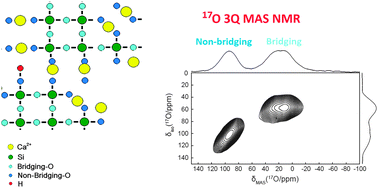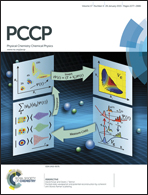A multinuclear solid state NMR spectroscopic study of the structural evolution of disordered calcium silicate sol–gel biomaterials
Abstract
Disordered sol–gel prepared calcium silicate biomaterials show significant, composition dependent ability to bond with bone. Bone bonding is attributed to rapid hydroxycarbonate apatite (HCA) formation on the glass surface after immersion in body fluid (or implantation). Atomic scale details of the development of the structure of (CaO)x(SiO2)1−x (x = 0.2, 0.3 and 0.5) under heat treatment and subsequent dissolution in simulated body fluid (SBF) are revealed through a multinuclear solid state NMR approach using one-dimensional 17O, 29Si, 31P and 1H. Central to this study is the combination of conventional static and magic angle spinning (MAS) and two-dimensional (2D) triple quantum (3Q) 17O NMR experiments that can readily distinguish and quantify the bridging (BOs) and non-bridging (NBOs) oxygens in the silicate network. Although soluble calcium is present in the sol, the 17O NMR results reveal that the sol–gel produced network structure is initially dominated by BOs after gelation, aging and drying (e.g. at 120 °C), indicating a nanoscale mixture of the calcium salt and a predominantly silicate network. Only once the calcium salt is decomposed at elevated temperatures do the Ca2+ ions become available to break BO. Apatite forming ability in SBF depends strongly on the surface OH and calcium content. The presence of calcium aids HCA formation via promotion of surface hydration and the ready availability of Ca2+ ions. 17O NMR shows the rapid loss of NBOs charge balanced by calcium as it is leached into the SBF. The formation of nanocrystalline, partially ordered HCA can be detected via31P NMR. This data indicates the importance of achieving the right balance of BO/NBO for optimal biochemical response and network properties.


 Please wait while we load your content...
Please wait while we load your content...